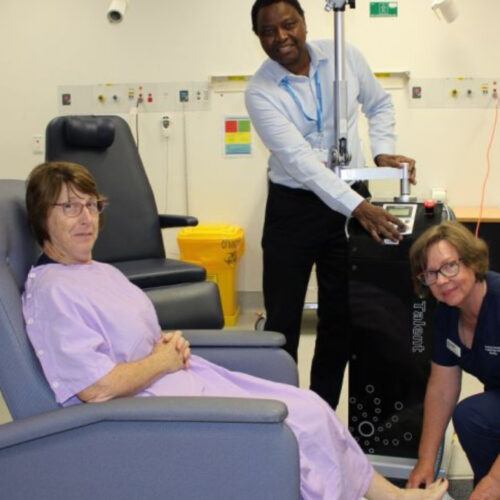
- Reference # H.5.2122004
- Project Status Current
- Timeframe 4 years (2020 - Jun 2024)
- Project manager Sarah Docherty
- CRCNA Funding $520,000
- Total project value $2,263,334
- Project research participant James Cook University (JCU) ; Townsville Hospital and Health Service ; Townsville Aboriginal and Islanders Health Services ; Arche Healthcare ; Queensland University of Technology ; Griffith University
- Research Programs 5. Northern health service delivery innovation
- Location Townsville, Bowen, Ayr Cardwell, Charters Towers, Gordonvale, Ingham, Mt Isa, Tully, Mackay, Proserpine, Mossman
- Health service delivery
Summary
Current models of care for diabetes-associated foot disease (DFD) management are not sustainable due to the recurring nature of this condition and lead to enormous social and economic burden (~$24 million / year). Models of healthcare that are financially viable and effective at meeting the challenges of the dispersed population of Northern Australia are urgently needed to reduce the rates of DFD-related amputations, and costs associated with preventable hospital admissions and ongoing treatment. This project will test whether a telehealth model of care (Tele-DFD) is more effective at achieving secondary prevention than the current usual face to face consultation model. If effective this model offers the potential of improved health outcomes and substantially reducing geographic disparity and social and economic burden from DFD.
This project will test an integrated multi-disciplinary treatment approach using a technology-facilitated secondary prevention program (Tele-DFD) consisting of remote medical management, footwear management and home foot monitoring, and behaviour change support to optimise DFD patient management and care delivery.
Expected outcomes
If the trial suggests Tele-DFD effectively improves the primary outcome, the following groups are expected to benefit
- People at risk of DFD through reduced amputations, hospital admissions and other serious events
- Investigators and partners who will have enhanced reputation and career and capacity building of the next generation of researchers
- The national and international DFD community who will benefit from knowledge about an effective means to achieve secondary prevention
- Governments and Tax payers via reduced economic burden from DFD.

